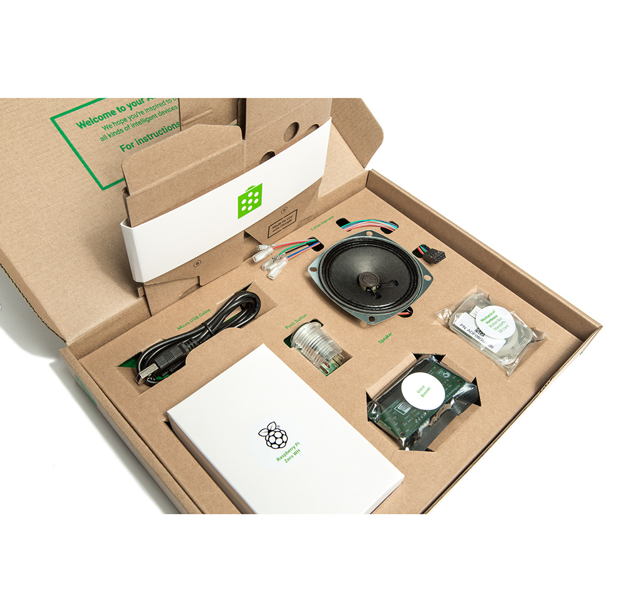 Image Source: Google Blog.
Image Source: Google Blog.
By Heather Hamilton, contributing writer
As smart home devices gain prevalence with many consumers, electronics retailers are attempting to make smart home speakers accessible to more people who may otherwise avoid the higher price point that many provide. From Apple’s HomePod (out later this year, $349) to Google Home ($130), smart speakers offer an easy-to-use-and-install option for many consumers. For others, Google’s new AIY (a combination of DIY and AI) Voice kit, which retails as a kit in complete form for only $49 (Voice) and $89.99 (Vision), presents a cheaper and more interesting alternative.
Once consumers have the complete kit in hand, they need only a screwdriver and the ability to follow carefully written and consumer-friendly instructions. Unlike previous versions, this one comes with a Raspberry Pi, and there’s also an accompanying app. Google maintains that the entire process should require only an hour and a half and will not require soldering — a plus for novice DIYers.
The Voice kit comes with a speaker, voice bonnet, push button, mechanical hardware, and button harness. Vision comes with a Raspberry Pi camera, vision bonnet, push button, electrical hardware, button harness, and long flex cable. Both come with a Raspberry Pi Zero WH, micro-USB connection cable, SD card, and hardware.
With the introduction of the DIY kit, Google also hopes to encourage programming and computer science skills in classrooms. “We’re taking the first of many steps to help educators integrate AIY into STEM lesson plans and help prepare students for the challenge of the future by launching a new version of our AIY kits,” wrote Billy Rutledge, Google director of AIY projects.
Wired reports that the kit initially appeared on the market as part of an issue of MagPi, the official Raspberry Pi magazine. Following its overwhelming success, Google has decided to offer the kit on a larger scale, and because it utilizes a Raspberry Pi board, the tech giant is encouraging developers of all levels to experiment with the kit, which takes it from a simple consumer product to a developer’s dream.
Amazon’s Alexa is just one example of such experimentation, and the internet is already crawling with tutorials that allow for Alexa APIs to be used with it (and a host of other devices). Alexa is also available as part of a kit.
Developers hoping to individualize their kit can take a number of approaches, including custom MEMS microphones. In fact, the kit isn’t an absolute necessity if DIY voice assistants are your thing. Because the kit was initially released in such a limited supply, there are tutorials across the internet that break down the contents in greater detail, providing instructions for DIYers who hope to avoid purchasing a kit (though the kit remains a fairly cost-effective way to do it).
Hackaday posted one in May of 2017, which contains a thorough examination of the kit’s contents in addition to plenty of clear photos. While it makes it easy to build a kit, it also provides a few hacks that you may use to personalize your AIY voice: different speakers, a shutdown feature that is a simple button, and a USB sound card in place of Google’s voice hat. Of course, even with these hacks, there’s room for additional hats and circuits.
The kit can be purchased from a variety of retailers, including Target, which offers a kit that’s ready to go off the shelf. Alternatively, if you’ve got spare parts around your workshop, you could spend $15.99 at Arrow Electronics (who owns Electronic Products’ parent company, AspenCore) and then purchase or use your existing Raspberry Pi 3 Model B, 5-V 2-A Switching Power Supply and SD Card separately.
Advertisement
Learn more about Electronic Products Magazine





